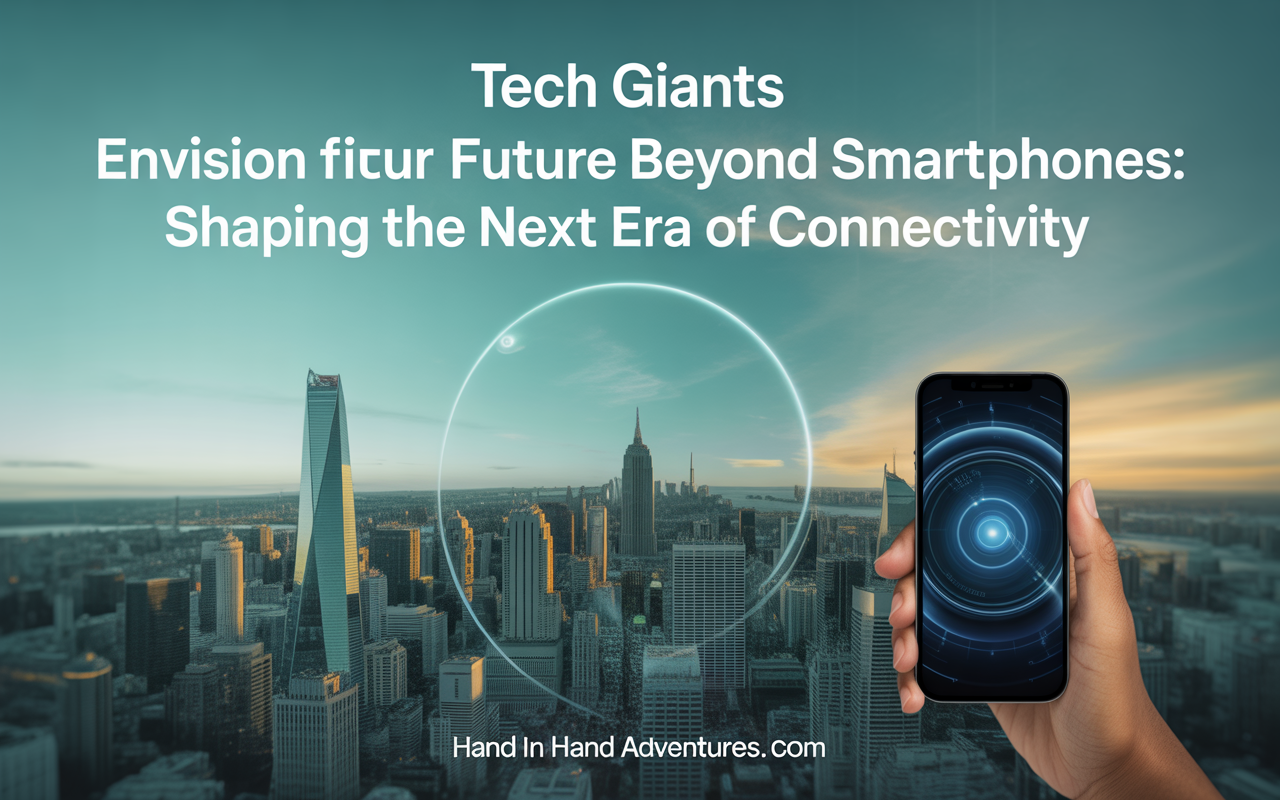The world of technology is evolving at an astonishing pace. Smartphones, once the centerpiece of our digital lives, are now being reimagined as just one part of a much larger picture. Tech giants like Apple, Google, and Microsoft are casting their sights beyond handheld devices to create a future where connectivity knows no bounds. This shift isn’t just about what comes next; it’s about transforming how we interact with the world around us. As these companies brainstorm bold innovations that rely on seamless integration across various platforms and devices, it raises exciting questions: What will this new era look like? How will it change our daily lives? Join us as we explore how tech giants envision a future beyond smartphones—a future filled with endless possibilities for connectivity and interaction.
The vision of tech giants for the future of connectivity
Tech giants are reimagining connectivity in ways that go beyond the limitations of smartphones. They envision a world where devices communicate seamlessly, creating an interconnected ecosystem.
Imagine your home autonomously adjusting to your preferences without needing manual input. This future relies on smart appliances and AI systems working harmoniously together.
Companies like Google, Apple, and Amazon are investing heavily in this vision. Their focus is on enhancing user experiences through augmented reality (AR) and virtual reality (VR). These technologies will blur the lines between physical and digital worlds.
Wearable tech is also evolving rapidly. Smart glasses or even intelligent contact lenses might soon replace traditional screens altogether. The goal is to make technology less intrusive while keeping it accessible.
As they push boundaries, these tech titans aim for a society more connected than ever before. Enhanced communication could lead to unprecedented levels of collaboration across industries and communities alike.
Advancements in Internet of Things (IoT) and Artificial Intelligence (AI)
The Internet of Things (IoT) is transforming our everyday environments into interconnected ecosystems. Devices ranging from smart thermostats to wearable health trackers now communicate seamlessly, providing users with unprecedented control and insight.
Artificial Intelligence enhances these devices by analyzing data in real-time. Imagine a home that learns your habits, adjusting the lighting and temperature automatically. This synergy between IoT and AI leads to increased efficiency and personalization.
Smart cities are emerging as another exciting frontier. Traffic lights coordinated by AI reduce congestion while energy systems optimize usage based on demand patterns.
Healthcare also benefits immensely from this technology duo. Remote monitoring tools powered by AI can alert doctors to critical changes in patients’ conditions instantly, paving the way for proactive healthcare solutions.
As advancements continue, the scope of IoT and AI will only expand further, opening doors to innovations we have yet to imagine.
The potential impact on daily life and society
The future envisioned by tech giants is set to transform daily life dramatically. Imagine a world where your home anticipates your needs, adjusting lighting and temperature as you arrive. This kind of seamless integration could revolutionize comfort and convenience.
Social interactions might evolve too. Wearable technology could facilitate deeper connections, enabling communication without the need for screens. People could engage more mindfully, fostering genuine relationships.
Public spaces may become smarter as well. Cities equipped with AI systems can manage traffic flow efficiently, reducing congestion and pollution. Smart infrastructure promises safer streets and enhanced public transport experiences.
Moreover, education stands to benefit significantly from these advancements. Interactive learning environments powered by augmented reality can make lessons captivating and accessible for all learners.
Such changes will undoubtedly shift societal dynamics, influencing productivity, health care access, and even leisure activities in unprecedented ways.
Challenges and concerns surrounding this future
As tech giants push beyond smartphones, several challenges arise. Privacy concerns loom large. With devices interconnected, the risk of data breaches escalates.
Security is another critical issue. Vulnerabilities in smart home devices could expose users to cyber threats. The more connected we become, the greater our dependency on technology grows.
Then there’s the digital divide. Not everyone has equal access to advanced technologies. This gap may widen socioeconomic disparities rather than bridge them.
Moreover, ethical considerations are paramount. AI systems must be developed responsibly to avoid biases and ensure fairness in decision-making processes.
Environmental impacts cannot be overlooked. As demand for new gadgets rises, so does electronic waste and resource depletion.
Navigating these complexities will require collaboration among stakeholders—governments, companies, and consumers alike—to shape a future that benefits all without compromising fundamental values.
Predictions for when these advancements will become mainstream
Experts anticipate that the advancements envisioned by tech giants could start becoming mainstream within the next five to ten years. As connectivity continues to evolve, we might see a significant shift in how we interact with technology.
The integration of IoT and AI will likely play a crucial role in this transition. Smart homes and interconnected devices will become commonplace, streamlining daily tasks and enhancing efficiency.
Moreover, new communication methods may emerge as well. Imagine augmented reality interfaces or brain-computer interactions transforming our experiences beyond traditional screens.
Rapid prototyping and agile development cycles are speeding up innovation timelines. We could witness breakthroughs sooner than expected as companies race to capture market share.
Consumer acceptance is essential for these technologies to flourish. When people begin embracing these changes, mass adoption might follow swiftly, reshaping society’s digital landscape dramatically.
Embracing the evolving landscape of technology
The future painted by tech giants is vibrant and full of promise. As we step away from the era dominated by smartphones, we find ourselves on the brink of a new age defined by interconnected devices, smarter AI systems, and an overall enhanced quality of life. The advancements in Internet of Things (IoT) technology are already beginning to weave seamlessly into our daily routines.
Imagine waking up to your smart home adjusting the thermostat based on weather forecasts or your refrigerator suggesting meals based on its inventory. These scenarios aren’t just dreams; they are rapidly becoming a reality thanks to ongoing innovations.
However, with this exciting evolution comes challenges that cannot be ignored. Concerns around privacy, security, and digital equity must be addressed as these technologies permeate society. Finding a balance between advancing connectivity and protecting users will require thoughtful consideration from both developers and consumers alike.
As for when these revolutionary changes will become mainstream? Many experts predict significant strides within the next decade. With each passing year, more investment pours into research and development aimed at making futuristic concepts part of everyday life.
Embracing this evolving landscape means staying informed about emerging technologies while being mindful of their implications. It’s an exciting time to witness how far we’ve come—and even more thrilling to think about where we’re headed next.

